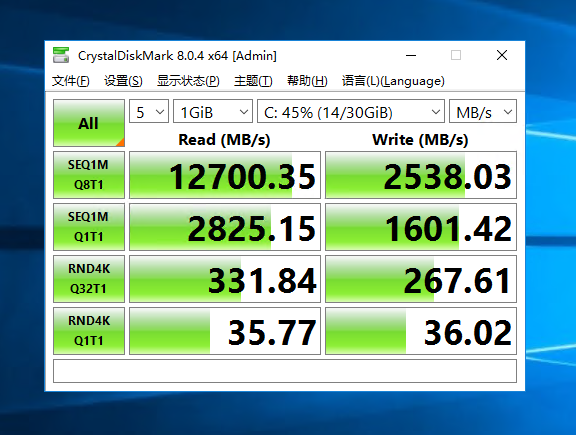organismsapche
apche 时间:2021-01-17 阅读:()
Received:3December2001Accepted:6May2002Publishedonline:23July2002Springer-Verlag2002Aneditorialregardingthisarticlecanbefoundinthesameissue(http://dx.
doi.
org/10.
1007/s00134-002-1428-x)AbstractObjective:Todeterminethetherapeuticefficacyandsafetyofplasmapheresisinthetreatmentofpatientswithseveresepsisandsepticshock.
Design:Prospective,random-ised,clinicaltrialwithaplanned,midstudy,interimanalysis.
Setting:Intensivecareunitinauni-versityhospitalinArchangels,Rus-sia.
Patients:Consecutivepatientswithseveresepsisorsepticshock.
Interventions:Onehundredandsixpatientswererandomisedtoreceiveeitherstandardtherapyoranadd-ontreatmentwithplasmapheresis.
Measurementsandresults:Thepri-maryendpointwas28-daysurvival.
Septicshockwasdiagnosedin57%oftheplasmapheresis-treatedpa-tientsand54%ofthecontrolpa-tients.
MeanAPACHEIIIscoreatentrywas56.
4intheplasmapheresisgroupand53.
5inthecontrolgroup.
The28-day,all-causemortalityratewas33.
3%(18/54)intheplasma-pheresisgroupand53.
8%(28/52)inthecontrolgroup.
Thisrepresentsarelativeriskforfataloutcomeintheplasmapheresisgroupof0.
61,anab-soluteriskreductionof20.
5%andanumberofpatientsneededtotreatof4.
9.
Apartfromsixtransientepi-sodesofhypotensionandonealler-gicreactiontofreshfrozenplasma,noadversereactionswereattribut-abletotheplasmapheresistreatmentinthisstudy.
Conclusions:Plasma-pheresismaybeanimportantadju-vanttoconventionaltreatmenttore-ducemortalityinpatientswithse-veresepsisorsepticshock.
Plasma-pheresisisasafeprocedureinthetreatmentofsepticpatients.
Apro-spectiverandomisedmulticentretrialiswarrantedtoconfirmourresultsandtodeterminewhichsubgroupsofsepticpatientswillbenefitmostfromthistreatmentmodality.
KeywordsAcutePhysiologyandChronicHealthEvaluation·Randomisedcontrolledtrial·Plasmapheresis·Sepsis·Septicshock·OutcomeIntensiveCareMed(2002)28:1434–1439DOI10.
1007/s00134-002-1410-7ORIGINALRolfBusundVladimirKouklineUriUtrobinEdvardNedashkovskyPlasmapheresisinseveresepsisandsepticshock:aprospective,randomised,controlledtrialIntroductionSepsisisanincreasinglycommoncauseofmorbidityandmortality,particularlyinelderly,immunocompro-misedandcriticallyillpatients[1].
Estimatedmortalityfromseveresepsisandsepticshockrangesfrom20%to60%[2,3].
Sepsisthereforerepresentstheleadingcauseofdeathinintensivecareunits[4,5],andtheincidencewillprobablycontinuetorisebecauseofdemographictrendsandincreaseduseofimmunosuppressiveagents,broad-spectrumantibioticsandinvasivetechnology.
Inrecentyearsmanynewtherapiesforsepsishavebeentestedinrandomisedclinicaltrials.
Acommonconceptoftheseinnovativetherapiesistheattempttocounteractthephysiologicalresponsetosepsismediatorsbyadmin-istrationofspecificantibodies,inhibitorsandantagonistsdirectedagainstthesemediators.
However,mostoftheseinnovativetherapieshavefailedtohaveaneffectonmortality[6].
Duringsepsis,particularlyGram-negativesepsis,theentirespectrumofhosteffectormoleculesareR.
Busund()DepartmentofCardiothoracicandVascularSurgery,TromsUniversityHospital,9038Troms,Norwaye-mail:rbusund@online.
noV.
Koukline·U.
UtrobinDepartmentofExtracorporalMethods,CityEmergencyHospital#1,Archangels,RussiaE.
NedashkovskyDepartmentofAnaesthesiologyandIntensiveCare,CityEmergencyHospital#1,Archangels,Russiareleased,manyofwhichhavebeenconfirmedtobere-sponsiblefortheclinicalsyndromeofsepsis.
Thissug-geststhatwhileblockingordown-regulatinganysinglemediatormaymodifyoratleastpartiallyabrogatetheorgandysfunctionseeninsepsis,itishighlyunlikelythatanysinglemodulatoryregimentargettingonesinglemediatorwouldbesuccessfulinreducingmortalityinaclinicalsettingofseveresepsisorsepticshock.
Further-more,manyofthemediatorsofsepsisareprobablyyetundiscovered,andourknowledgeofthemediatorsthathavebeendiscoveredisfarfromcomplete.
Plasmapheresisisanon-selectivemethodwiththepo-tentialtoremoveharmfulortoxicmediatorsfromthecirculation.
Usingfresh-frozenplasmaasreplacementfluid,consumedplasmafactorsaresubstituted,therebypossiblyrestoringtheopsoniccapacityandimprovingthecoagulationabnormalities,bothofwhicharedis-turbedinsepsis.
Since1979severalreportshavebeenpublishedonplasmapheresisandwholebloodexchangeforsepsis[7,8,9,10,11,12,13,14,15,16].
Thesere-ports,basedonasmallnumberofpatientsandwithoutappropriatecontrolpatients,areinconclusiveandcon-flictingwithrespecttowhetherplasmapheresisprovidesanybeneficialeffectsinthetreatmentofsepsis.
Conflict-ingresultsarealsoreportedinanimalstudies,whichhavesoughttoevaluatetheefficacyofplasmapheresisinsepsisandsepticshock[17,18,19].
InArchangelsplasmapheresishasbeenusedinthetreatmentofsepsisformanyyears,butthemethodhasnotbeenevaluatedbyaproperclinicaltrial.
Theaimofthepresentstudywastodeterminethetherapeuticeffica-cyandsafetyofplasmapheresisinthetreatmentofpa-tientswithseveresepsisandsepticshockinaprospec-tive,randomised,controlledtrial.
MaterialsandmethodsTheprotocolwasapprovedbytheinstitutionalreviewboardattheCityEmergencyHospital#1.
Informedconsentwasobtainedfromallconsciouspatientsenrolledinthestudy.
Delayedconsentwasobtainedfromsurvivingpatientswhowereunconsciousatthetimeofenrolment.
PatientselectionanddefinitionsEligiblepatientswereagedbetween17and70yearsandhadse-veresepsisorsepticshock.
SepsiswasdiagnosedaccordingtothecriteriaproposedbyBoneetal.
[20].
Thesystemicinflammatoryresponsetoinfectionincludedmorethanoneofthefollowingclinicalmanifestations;temperaturehigherthan38°Corlowerthan36°C,tachycardia(heartratehigherthan90beatspermin),tachypnoea(respiratoryratemorethan20breathspermin)orhy-perventilation(PaCO2lessthan4.
2kPa),andleukocytosis(whitebloodcellcountgreaterthan12,000/mm3)orleucopenia(whitebloodcellcountlessthan4000/mm3).
Severesepsiswasdefinedassepsisassociatedwithorgandysfunction,hypoperfusionabnor-mality,orsepsisinducedhypotension(systolicbloodpressurelessthan90mmHg).
Hypoperfusionmarkersusedwerelacticacidosis,oliguria,andalterationinmentalstatus.
Septicshockwasdefinedassepsis-inducedhypotension,persistingdespiteadequatefluidresuscitation,alongwiththepresenceofhypoperfusionabnormal-itiesororgandysfunction.
Patentswithhypoperfusionabnormali-tiesororgandysfunctionreceivinginotropicsupportwereconsid-eredtohavesepticshockeveniftheyhadnormalbloodpressures.
Patientstreatedforseveresepsisorsepticshockinotherhospitalsformorethan12hbeforetheyweretransferredtoCityHospital#1,andpatientswithsevereunderlyingdiseasewerenotincludedinthestudy.
Severeunderlyingdiseaseincludespatientswithter-minalcancer,terminalcardiacfailure,end-stagerenalfailureandpotentiallylethalinjuries.
Randomisation,treatmentproceduresandendpointAssoonasthediagnosisofseveresepsisorsepticshockwases-tablished,thepatientswererandomisedtoreceiveplasmapheresisinadditiontoconventionalsepsistreatmentorconventionalsepsistreatmentalone.
Thepatientswereblock-randomisedintwostagesallowinganinterimanalysisafterinclusionof50patients.
Allpa-tientsreceivedconventionalsepsistreatmentaccordingtotheindi-cationineachcase.
Thistreatmentincludedantibiotics,fluidre-suscitation(plasma,colloids,and/orcrystalloid),surgicalproce-dures,andcardiovascularandventilatorysupportwhenindicated.
Combinationtherapyofantibioticswaschosenaccordingtosourceofinfectionandmicro-organismssuspectedtobeinvolved,andcorrectedaccordingtopositivebacteriologicalcultureandre-sistancepatternswhenavailable.
Patientsinbothgroupswhodidnothavecontraindicationstoanticoagulationtherapyreceivedheparin.
Activatedpartialthromboplastintime,usedtomonitortheanticoagulationtherapy,waskeptbelow80sexceptduringtheperiodswhenpatientswereundergoingplasmapheresis.
Plasma-pheresiswasinitiatedwithin6hafterthediagnosiswasestab-lished.
Itwasrepeatedoncewithin24hin27patientsinwhomtheclinicalconditiondidnotimprove,orinwhomtheclinicalconditionstilldeterioratedafterthefirstprocedureasjudgedbythepresenceorprogressionofhaemodynamicinstabilityandthedevelopmentoforgandysfunction.
PlasmapheresiswasperformedemployingaPF-0.
5(Lvov,Russia),andaDK2-0.
3(Rjazan,Rus-sia)continuousflowplasmapheresismachinesusingveno-venousaccess.
Heparindosesof200–300U/kgbodyweightwasusedasanticoagulant.
Activatedclottingtimewaskeptbetween250and300s.
duringplasmapheresis.
Duringeachexchangesessionavol-umeof30–40ml/kgbodyweightofpatient'splasmawasex-changedwithanequalvolumeoffresh-frozenplasmafromheal-thydonors,dilutedwithanequalvolumeof5%humanalbuminsolution.
Thedurationofthefirstplasmapheresissessionwas133±23minandthesecondsession137±21min.
Themeanex-changeplasmavolumeduringthefirstsessionwas1820±402mland1763±312mlduringthesecondsession.
Thepatientswerefollowedfor28daysoruntiltheydied.
ForcomparisonofdiseaseseveritytheAcutePhysiologyandChronicHealthEvaluation(APACHE)IIIscorewascalculatedatstudyen-try,after24handafter48h[21].
Primaryendpointwas28-daysurvival.
PatientcharacteristicsThestudyincluded106consecutivepatients(60men,and46women;meanage44±15years)treatedbetweenDecember1994andMarch1997.
Atstudyentry56%ofthepatientswereinsepticshock(31/54intheplasmapheresisgrouppatientsand28/52inthecontrolgroup).
MeanbaselineAPACHEIIIscorewas54.
9±17.
4(56.
4intheplasmapheresisgroupand53.
5inthecontrolgroup).
Thelargestnumberofinfectionsoriginatedintheabdomen,with33patientsintheplasmapheresisgroupand16inthecontrolgroup.
Thenextlargestgrouphadrespiratorytractinfections14351436(n=12)followedbyurinarytractinfections(n=10).
Exceptforageanddistributionofsitesofinfection,therewerenostatisticallysignificantdifferencesbetweenthegroupswithrespecttothesebaselinecharacteristics(Table1).
Surgicalprocedureswereper-formedon65%(35/54)ofplasmapheresistreatedpatientsandon73%(38/52)ofcontrolpatients.
Inotropeswereusedin56%(30/54)ofpatientsintheplasmapheresisgroupandin52%(27/52)ofpatientsinthecontrolgroup.
Mechanicalventilationwasrequiredby46%intheplasmapheresisgroupandby67%inthecontrolgroup(Table2).
StatisticalanalysisStatisticalanalysiswasperformedusingSPSSforWindows,ver-sion10.
0(SPSS,Chicago,Ill.
,USA).
Univariatecomparisonsofbaselinecharacteristicsweremadebyunpairedttestforcontinu-ousvariablesandFisher'sexacttestforcategoricalvariables.
Pearson'sχ2wasusedtotestdifferencesininfectiousoriginbe-tweenthetwogroups.
ChangesinAPACHEIIIscorefrombase-linevalueswereassessedbypairedttest.
Fisher'sexacttestwasusedtotestdifferencesinsurvivalbetweenthegroups.
Multiplelogisticregressionwasusedtoassesstheeffectofthetreatmentvariableandthebaselinedemographicandprognosticvariablesonsurvival.
Thereportedmortalityratesrepresentallcausemortalityinthetwogroups,andtheanalysiswascompletedonanintentionto-treat-basis.
Dataarepresentedasmean±SD.
Differenceswereconsideredsignificantatpvalueslessthan0.
05.
Allreportedpvaluesaretwo-sided.
ResultsEfficacyandsafetyofplasmapheresisTheinterimanalysisrevealedamortalityof14/25inthecontrolgroupcomparedto8/25intheplasmapheresisgroup(n.
s.
).
Consequentlythestudywascontinued.
Nofataladversereactionswereattributabletotheplasma-pheresisprocedureinthisstudy.
Sixpatientshadshortandundramaticperiodsofhypotensionduringtheplas-mapheresisprocedure,andonepatienthadanallergicre-actiontofresh-frozenplasma.
Twopatientsintheplas-mapheresisgroupdiedofbleeding.
Onepatientwithme-diastinitisduetoastabwoundthatpenetratedtheab-dominalaorta,theomentumandthelowerpartoftheoe-sophagusdiedofmassiverebleedingfromtheabdominalaorta4daysafterhislastplasmapheresisprocedure.
Thesecondpatientthatdiedfrombleedinghadahaemor-rhagicpancreatitisanddied17daysaftertheplasma-pheresisprocedure.
Thusnoneofthemcouldberelatedtotheplasmapheresisprocedure.
Duringthefirst24hAPACHEIIIscoredecreasedby20%intheplasmapher-esisgroup(pAPCHEIIIscoredroppedinbothgroupsfromday1today2.
However,thechangeinAPACHEIIIFig.
1Cumulativesurvivalin106patientswithseveresepsisorsepticshockrandomlyassignedtoplasmapheresis(solidline)ornot(dottedline)inadditiontostandardsepsistreatmentTable3Prognosticscore,outcomeandcauseofdeathin106pa-tientswithseveresepsisorsepticshockrandomlyassignedtoplasmapheresisornotinadditiontostandardsepsistreatment(n.
a.
notassessed,ARDSadultrespiratorydistresssyndrome,DICdis-seminatedintravascularcoagulation)VariableaPlasmapheresisControlp(n=54)(n=52)MeanAPACHEIIIscoreDay156.
4±18.
853.
5±15.
80.
40Day244.
5±18.
5*49.
0±19.
70.
24Differencedays1–211.
5±15.
64.
5±15.
70.
0328-daymortalityTotalstudypopulation18(33.
3%)28(53.
8%)0.
05Abdominalgroup11/33(33.
3%)11/16(68.
5%)0.
03Othergroups7/21(33.
3%)17/36(47.
2%)0.
4CauseofdeathRespiratoryfailure/ARDS24n.
a.
Cardiovascular710n.
a.
Multiorganfailure613n.
a.
Brainherniation01n.
a.
DIC10n.
a.
Bleeding20n.
a.
aNumberofpatientsexceptwherestatedotherwise*p<0.
001vs.
baselineTable4Multiplelogisticregressionanalysisevaluatingthead-justedeffectsofunbalancedbaselinecharacteristicsandplasma-pheresisonmortalityinpatientswithseveresepsisorsepticshockIndependentvariableOddsratio95%CIpAge(10years)a1.
481.
03–2.
120.
03Siteofinfection0.
04AbdominalReferenceFemalegenital0.
540.
07–4.
00Urological0.
150.
02–0.
93Lung4.
040.
74–22.
2Skin/softtissue0.
410.
07–2.
53Brain1.
600.
30–8.
62Other1.
710.
33–8.
88Plasmaexchange0.
410.
15–1.
090.
07aDenotesoddsratiobyincreaseof10yearsscorefromday1today2wassignificantlybetterintheplasmapheresisgroup.
TheAPACHEscorehasbeenshowntobeareliablepredictorofoutcomeincriticallyillpatientsingeneral[24]aswellasinpatientswithsur-gicalandpostoperativeintra-abdominalinfections[25,26].
MeanAPACHEIIIscoreinourserieswas54.
9(17.
4)withacorrespondingoverallmortalityof43%,whichissomewhathigherthanwouldbeexpectedformtheAPACHEscoreifwecompareourmaterialwithpre-viousreports[24].
However,internationalcomparisonsmaybebiasedbydifferencesinlaboratorytests,differ-encesinpatientpopulationsandcaseselectionsforICUtreatment.
AsthismayinfluencethecalibrationoftheAPACHEestimates[27],themostusefulandreliablees-timatetodeterminethepatient'sresponsetotherapyistherelativetrendorchangeinAPACHEscorefromonedaytothenext(Table3).
ThisconceptissupportedbyKnausetal.
[21],whostatethatchangesintheAPACHEIIIscoreoneachsubsequentdayofICUtherapyprovidedailyupdatesintheriskestimates.
Bothclinicalandexperimentalstudieshaveshownthatplasmapheresislowerscirculatinglevelsofendo-toxinandcytokinessuchastumornecrosisfactorαandinterleukin1β[10,18,28,29,30].
Mostauthorsclaimthatthebeneficialeffectofplasmapheresisisduetotheremovalofthesemediators.
However,thebeneficialef-fectofplasmapheresisisprobablynotexplainedsolelybytheremovaloftoxicmediators.
Usingfresh-frozenplasmaasreplacementfluid,theprocedurealsoreplen-ishesdeficienciessuchastheimmunoglobulinsIgMandIgA[11]andcoagulationfactorsandinhibitorssuchasproteinsCandSandantitrombinIII.
Plasmapheresismaythusrestorecoagulationabnormalitiesandimproveopsoniccapacityandserumbactericidalactivity.
Thismayleadtoenhancementofthehumoralandcellularin-flammatoryresponseandnormalisationofDICandclot-tingparameters[7,9,10].
Supportforthisisgiveninplacebo-controlledtrialswhichhavetestedsupplemen-talimmunoglobulintherapyonpatientswithpostopera-tivesepsisandsepticshock[31].
Theroleofanticoagu-lationtherapyinsepsisisstillunsettled,andwecannotruleoutthepossibilitythattheadditionalheparindeliv-eredduringtheplasmapheresisprocedureaffectedout-come;however,thiscanberesolvedonlyinfuturetri-als.
UsingtheratherbroadsepsisdefinitionproposedbyBoneetal.
[20]asinclusioncriteria,weobtainedahet-erogeneousstudypopulationincludingpatientswithbothGram-negativeandGram-positivesepsisofvariousori-gins.
Aposthocanalysisinthegroupofpatientswithabdominalsepsis(comprising46%oftheoverallstudypopulation)revealedasignificantlyhighersurvivalrateintheplasmapheresisgroupthaninthecontrolgroup,whilethedifferenceinsurvivalfortherestofthestudypopulationwasnotsignificant.
ThebacterialspecieswiththegreatestpotentialforinvasivenessinabdominalsepsisareconsideredtobetheGram-negativebacilliEscherichiacoliandBacteroidesfragilis[32].
Thema-jorityofsepticpatientssuccessfullytreatedbyplasma-pheresishavesufferedfromsystemicmeningococcaldis-easeorotherGram-negativesepsis[7,8,10,12,13,16].
Mostoftheexperimentalstudiesinfavourofplasma-pheresishavebeenperformedonanimalschallengedwithGram-negativebacilliorendotoxin.
Ourdatadem-onstratingimprovedsurvivalinpatientswithabdominalsepsisfollowingplasmapheresisareinlinewiththesepreviousreportsandsuggestthatthebeneficialeffectofplasmapheresisinsepticpatientsmaybelimitedtopa-tientswithGram-negativesepsis.
Duetonegativebacteriologicalculturesormissingvaluesonmorethanone-halfofthepatients,wewerenotabletoconfirmthattheantibioticsgivenhadanyef-fectonthecausativemicro-organism.
Studieshaveshownthattreatmentwithappropriateantibioticsmayreduceshockandmortalityrateby50%[33].
Itisun-likely,however,thatthereisanydifferenceinresistancepatternbetweenthetwogroupswhobothhavebeentreatedwithcombinationtherapyofbroad-spectrumanti-bioticsinaccordancewiththelocaltraditions.
Further-more,accordingtoAstizandRackow[5],bacteraemiaoccursonlyin40–60%ofpatientswithsepticshock,andthecausativeorganismisnotisolatedin10–30%ofpa-tients,possiblybecauseofpreviousexposuretoantibiot-ics.
Thepresenteddataonmechanicalventilationrepre-sentsventilatortreatmentafterrandomisation.
Aswedonothavethebaselinedataonmechanicalventilation,wecannotruleoutthepossibilitythatdifferencesinme-chanicalventilationbetweenthetwogroupsmayhaveaffectedoutcome.
Thisisunlikely,however,sincethebaselineAPACHEIIIscorefortherespiratoryvariablesrespiratoryrateandPaO2werenotsignificantlydifferentbetweenthegroups.
Inconclusion,ourstudyshowsthatplasmapheresiscanbeperformedsafelyinpatientswithseveresepsisorsepticshock.
Thedataalsosupportthehypothesisthatplasmapheresisreducesmortalityinthesepatients,al-thoughunbalancedbaselinecharacteristicspreventsusfrommakinggeneralrecommendationsbasedonthisstudy.
Alargerscale,phaseIII,prospectiverandomisedmulticentretrialisneededtoconfirmourresultsandtodeterminewhichgroupsofsepticpatientswillparticular-lybenefitfromthistreatmentmodality.
AcknowledgementsWethankJanWilscow,MD,foradviceonstatisticalproceduresandProf.
DagG.
SrlieandProf.
MadsGilbertforhelpfulcomments.
GordonS.
Doig,PhD,BiostatisticalSupportUnit,ResearchOffice,RoyalNorthShoreHospital,Syd-ney,providedadditionalcommentsonpresentation,analysisandinterpretationinthefinalmanuscript.
14381439References1.
CentersforDiseaseControl(1990)In-creaseinnationalhospitaldischargesurveyratesforsepticemia–UnitedStates1979–1987.
MMWRMorbMor-talWklyRep39:31–342.
Anonymous(1990)Increaseinnationalhospitaldischargesurveyratesforsep-ticemia–UnitedStates,1979–1987.
JAMA263:937–9383.
FriedmanG,SilvaE,VincentJL(1998)Hasthemortalityofsepticshockchangedwithtime.
CritCareMed26:2078–20864.
NiedermanMS,FeinAM(1990)Sep-sissyndrome,theadultrespiratorydis-tresssyndrome,andnosocomialpneu-monia:acommonclinicalsequence.
ClinChestMed11:663–6655.
AstizME,RackowEC(1998)Septicshock.
Lancet351:1501–15056.
FinchRG(1998)Designofclinicaltri-alsinsepsis:problemsandpitfalls.
JAntimicrobChemother41[SupplA]:95–1027.
ScharfmanWB,TillotsonJR,TaftGE,WrightE(1979)Plasmapheresisformeningococcemiawithdisseminatedintravascularcoagulation.
NEnglJMed300:1277–12788.
BjorvatnB,BjertnaesL,FadnesHO,FlaegstadT,GuttebergTJ,Kristian-senBE,PapeJ,RekvigOP,OsterudB,AanderudL(1984)Meningococcalsepticemiatreatedwithcombinedplas-mapheresisandleucapheresisorwithbloodexchange.
BMJ228:439–4419.
BrandtzaegP,SirnesK,FolslandB,GodalHC,KierulfP,BruunJN,DoblougJ(1985)PlasmapheresisinthetreatmentofseveremeningococcalorpneumococcalsepticemiawithDICandfibrolysis.
ScandJClinLabInvestSuppl178:53–5510.
DrapkinS,WischJS,GelfandJA,CannonJ,DinarelloC(1989)Plasma-pheresisforfulminantmeningococce-mia.
PediatrInfectDisJ8:399–40011.
VainNE,MazlumianJR,SwarnerOW,ChaCC(1980)Roleofexchangetransfusioninthetreatmentofseveresepticemia.
Pediatrics6:693–69612.
VanDeurenM,SantmanFW,vanDalenR,SauerweinRW,SpanLFR,vanderMeerJWM(1992)Plasmaandwholebloodexchangeinmeningococ-calsepsis.
ClinInfectDis15:424–43013.
GardlundB,SjolinJ,NilssonA,RollM,WickertsCJ,WikstrmB,WretlindB(1993)Plasmapheresisinthetreatmentofprimarysepticshockinhumans.
ScandJInfectDis25:757–76114.
StegmayrBG(1996)Plasmaexchangeinpatientswithsepticshockincludingacuterenalfailure.
BloodPurif14:102–10815.
SchmidtJ,MannS,MohrVD,LampertR,FirlaU,ZirngiblH(2000)Plasmapheresiscombinedwithcontin-uousvenovenoushemofiltrationinsur-gicalpatientswithsepsis.
IntensiveCareMed26:532–53716.
DundasOS,MurphyJ,SoutarRL,JonesGA,HutchinsonSJ,ToddWT(1999)Effectivenessoftherapeuticplasmaexchangeinthe1996Lanark-shireEscherichiacoliO157:H7out-break.
Lancet354:1327–133017.
NatansonC,HoffmanWD,KoevLA,DolanDP,BanksSM,BacherJ,DannerRL,KleinHG,ParrilloJE(1993)Plasmaexchangedoesnotim-provesurvivalinacaninemodelofhu-mansepticshock.
Transfusion33:243–24818.
BusundR,LindsetmoR-O,RasmussenL-T,RkkeO,RekvigOP,RevhaugA(1991)Tumornecrosisfactorandinter-leukin1appearanceinexperimentalGram-negativesepticshock.
Theef-fectsofplasmaexchangewithalbuminandplasmainfusion.
ArchSurg126:591–59719.
BusundR,LindsetmoR-O,RekvigOP,RevhaugA(1993)Repeatedplasmatherapyinducesfatalshockinexperi-mentalsepticemia.
CircShock40:268–27520.
BoneRC,BalkRA,CerraFB,DellingerRP,FeinAM,KnausWA,ScheinRM,SibbaldWJ(1992)Defini-tionsforsepsisandorganfailureandguidelinesfortheuseofinnovativetherapiesinsepsis.
Chest101:1644–165521.
KnausWA,WagnerDP,DraperEA,ZimmermanJE,BergnerM,BastosPG,SirioCA,MurphyDJ,LotringT,DamianoA(1991)TheAPACHEIIIprognosticsystem.
Riskpredictionofhospitalmortalityforcriticallyillhos-pitalizedadults.
Chest100:1619–163622.
GrootemanMPC,GroeneveldABJ(2000)Aroleforplasmaremovaldur-ingsepsisIntensiveCareMed26:493–49523.
PollackM(1992)Editorialresponse:bloodexchangeandplasmapheresisinsepsisandsepticshock.
ClinInfectDis15:431–43324.
WagnerDP,KnausWA,HarrellFE,ZimmermanJE,WattsC(1994)Dailyprognosticestimatesforcriticallyilladultsinintensivecareunits:resultsfromaprospective,multicenter,incep-tioncohortanalysis.
CritCareMed22:1359–137225.
BariePS,HydoLynnJ,FischerE(1995)ComparisonofAPACHEIIandIIIscoringsystemsformortalitypre-dictionincriticalsurgicalillness.
ArchSurg130:77–8226.
GrunauG,HeemkenR,HauT(1996)Predictorsofoutcomeinpatientswithpostoperativeintra-abdominalinfec-tion.
EurJSurg162:619–62527.
KnausWA,WagnerDP(1992)Acutephysiologyandchronichealthevalua-tionandGlasgowcomascores.
CritCareMed20:1736–173828.
JanbonB,VuillezJP,CarpentierF,BarnoudD,Andre-PoyaudP,BarbeG,GuignierM(1992)Removalofcircu-latingtumornecrosisfactor.
Itsroleinsepticshocktreatment.
AnnMedIn-terne(Paris)143[Suppl1]:13–1629.
IwaiH,NagakiM,NaitoT,IshikiY,MurakamiN,SugiharaJ,MutoY,MoriwakiH(1998)Removalofendo-toxinandcytokinesbyplasmaex-changeinpatientswithacutehepaticfailure.
CritCareMed26:873–87630.
VanDeurenM,FrielingJT,vanderVen-JongekrijgJ,NeelemanC,RusselFG,vanLierHJ,BartelinkAK,vanderMeerJW(1998)Plasmapatternsoftumornecrosisfactor-alpha(TNF)andTNFsolublereceptorsduringacutemeningococcalinfectionsandtheef-fectofplasmaexchange.
ClinInfectDis26:918–92331.
WerdanK(1999)Supplementalim-muneglobulinsinsepsis.
ClinChemLabMed37:341–34932.
WalkerAP,KrepelCJ,GohrCM,EdmistonCE(1994)Microfloraofab-dominalsepsisbylocusofinfection.
JClinMicrobiol32:557–55833.
KregerBE,CravenDE,McCabeWR(1980)Gram-negativebacteremia.
IV.
Re-evaluationofclinicalfeaturesandtreatmentin612patients.
AmJMed68:344–345
doi.
org/10.
1007/s00134-002-1428-x)AbstractObjective:Todeterminethetherapeuticefficacyandsafetyofplasmapheresisinthetreatmentofpatientswithseveresepsisandsepticshock.
Design:Prospective,random-ised,clinicaltrialwithaplanned,midstudy,interimanalysis.
Setting:Intensivecareunitinauni-versityhospitalinArchangels,Rus-sia.
Patients:Consecutivepatientswithseveresepsisorsepticshock.
Interventions:Onehundredandsixpatientswererandomisedtoreceiveeitherstandardtherapyoranadd-ontreatmentwithplasmapheresis.
Measurementsandresults:Thepri-maryendpointwas28-daysurvival.
Septicshockwasdiagnosedin57%oftheplasmapheresis-treatedpa-tientsand54%ofthecontrolpa-tients.
MeanAPACHEIIIscoreatentrywas56.
4intheplasmapheresisgroupand53.
5inthecontrolgroup.
The28-day,all-causemortalityratewas33.
3%(18/54)intheplasma-pheresisgroupand53.
8%(28/52)inthecontrolgroup.
Thisrepresentsarelativeriskforfataloutcomeintheplasmapheresisgroupof0.
61,anab-soluteriskreductionof20.
5%andanumberofpatientsneededtotreatof4.
9.
Apartfromsixtransientepi-sodesofhypotensionandonealler-gicreactiontofreshfrozenplasma,noadversereactionswereattribut-abletotheplasmapheresistreatmentinthisstudy.
Conclusions:Plasma-pheresismaybeanimportantadju-vanttoconventionaltreatmenttore-ducemortalityinpatientswithse-veresepsisorsepticshock.
Plasma-pheresisisasafeprocedureinthetreatmentofsepticpatients.
Apro-spectiverandomisedmulticentretrialiswarrantedtoconfirmourresultsandtodeterminewhichsubgroupsofsepticpatientswillbenefitmostfromthistreatmentmodality.
KeywordsAcutePhysiologyandChronicHealthEvaluation·Randomisedcontrolledtrial·Plasmapheresis·Sepsis·Septicshock·OutcomeIntensiveCareMed(2002)28:1434–1439DOI10.
1007/s00134-002-1410-7ORIGINALRolfBusundVladimirKouklineUriUtrobinEdvardNedashkovskyPlasmapheresisinseveresepsisandsepticshock:aprospective,randomised,controlledtrialIntroductionSepsisisanincreasinglycommoncauseofmorbidityandmortality,particularlyinelderly,immunocompro-misedandcriticallyillpatients[1].
Estimatedmortalityfromseveresepsisandsepticshockrangesfrom20%to60%[2,3].
Sepsisthereforerepresentstheleadingcauseofdeathinintensivecareunits[4,5],andtheincidencewillprobablycontinuetorisebecauseofdemographictrendsandincreaseduseofimmunosuppressiveagents,broad-spectrumantibioticsandinvasivetechnology.
Inrecentyearsmanynewtherapiesforsepsishavebeentestedinrandomisedclinicaltrials.
Acommonconceptoftheseinnovativetherapiesistheattempttocounteractthephysiologicalresponsetosepsismediatorsbyadmin-istrationofspecificantibodies,inhibitorsandantagonistsdirectedagainstthesemediators.
However,mostoftheseinnovativetherapieshavefailedtohaveaneffectonmortality[6].
Duringsepsis,particularlyGram-negativesepsis,theentirespectrumofhosteffectormoleculesareR.
Busund()DepartmentofCardiothoracicandVascularSurgery,TromsUniversityHospital,9038Troms,Norwaye-mail:rbusund@online.
noV.
Koukline·U.
UtrobinDepartmentofExtracorporalMethods,CityEmergencyHospital#1,Archangels,RussiaE.
NedashkovskyDepartmentofAnaesthesiologyandIntensiveCare,CityEmergencyHospital#1,Archangels,Russiareleased,manyofwhichhavebeenconfirmedtobere-sponsiblefortheclinicalsyndromeofsepsis.
Thissug-geststhatwhileblockingordown-regulatinganysinglemediatormaymodifyoratleastpartiallyabrogatetheorgandysfunctionseeninsepsis,itishighlyunlikelythatanysinglemodulatoryregimentargettingonesinglemediatorwouldbesuccessfulinreducingmortalityinaclinicalsettingofseveresepsisorsepticshock.
Further-more,manyofthemediatorsofsepsisareprobablyyetundiscovered,andourknowledgeofthemediatorsthathavebeendiscoveredisfarfromcomplete.
Plasmapheresisisanon-selectivemethodwiththepo-tentialtoremoveharmfulortoxicmediatorsfromthecirculation.
Usingfresh-frozenplasmaasreplacementfluid,consumedplasmafactorsaresubstituted,therebypossiblyrestoringtheopsoniccapacityandimprovingthecoagulationabnormalities,bothofwhicharedis-turbedinsepsis.
Since1979severalreportshavebeenpublishedonplasmapheresisandwholebloodexchangeforsepsis[7,8,9,10,11,12,13,14,15,16].
Thesere-ports,basedonasmallnumberofpatientsandwithoutappropriatecontrolpatients,areinconclusiveandcon-flictingwithrespecttowhetherplasmapheresisprovidesanybeneficialeffectsinthetreatmentofsepsis.
Conflict-ingresultsarealsoreportedinanimalstudies,whichhavesoughttoevaluatetheefficacyofplasmapheresisinsepsisandsepticshock[17,18,19].
InArchangelsplasmapheresishasbeenusedinthetreatmentofsepsisformanyyears,butthemethodhasnotbeenevaluatedbyaproperclinicaltrial.
Theaimofthepresentstudywastodeterminethetherapeuticeffica-cyandsafetyofplasmapheresisinthetreatmentofpa-tientswithseveresepsisandsepticshockinaprospec-tive,randomised,controlledtrial.
MaterialsandmethodsTheprotocolwasapprovedbytheinstitutionalreviewboardattheCityEmergencyHospital#1.
Informedconsentwasobtainedfromallconsciouspatientsenrolledinthestudy.
Delayedconsentwasobtainedfromsurvivingpatientswhowereunconsciousatthetimeofenrolment.
PatientselectionanddefinitionsEligiblepatientswereagedbetween17and70yearsandhadse-veresepsisorsepticshock.
SepsiswasdiagnosedaccordingtothecriteriaproposedbyBoneetal.
[20].
Thesystemicinflammatoryresponsetoinfectionincludedmorethanoneofthefollowingclinicalmanifestations;temperaturehigherthan38°Corlowerthan36°C,tachycardia(heartratehigherthan90beatspermin),tachypnoea(respiratoryratemorethan20breathspermin)orhy-perventilation(PaCO2lessthan4.
2kPa),andleukocytosis(whitebloodcellcountgreaterthan12,000/mm3)orleucopenia(whitebloodcellcountlessthan4000/mm3).
Severesepsiswasdefinedassepsisassociatedwithorgandysfunction,hypoperfusionabnor-mality,orsepsisinducedhypotension(systolicbloodpressurelessthan90mmHg).
Hypoperfusionmarkersusedwerelacticacidosis,oliguria,andalterationinmentalstatus.
Septicshockwasdefinedassepsis-inducedhypotension,persistingdespiteadequatefluidresuscitation,alongwiththepresenceofhypoperfusionabnormal-itiesororgandysfunction.
Patentswithhypoperfusionabnormali-tiesororgandysfunctionreceivinginotropicsupportwereconsid-eredtohavesepticshockeveniftheyhadnormalbloodpressures.
Patientstreatedforseveresepsisorsepticshockinotherhospitalsformorethan12hbeforetheyweretransferredtoCityHospital#1,andpatientswithsevereunderlyingdiseasewerenotincludedinthestudy.
Severeunderlyingdiseaseincludespatientswithter-minalcancer,terminalcardiacfailure,end-stagerenalfailureandpotentiallylethalinjuries.
Randomisation,treatmentproceduresandendpointAssoonasthediagnosisofseveresepsisorsepticshockwases-tablished,thepatientswererandomisedtoreceiveplasmapheresisinadditiontoconventionalsepsistreatmentorconventionalsepsistreatmentalone.
Thepatientswereblock-randomisedintwostagesallowinganinterimanalysisafterinclusionof50patients.
Allpa-tientsreceivedconventionalsepsistreatmentaccordingtotheindi-cationineachcase.
Thistreatmentincludedantibiotics,fluidre-suscitation(plasma,colloids,and/orcrystalloid),surgicalproce-dures,andcardiovascularandventilatorysupportwhenindicated.
Combinationtherapyofantibioticswaschosenaccordingtosourceofinfectionandmicro-organismssuspectedtobeinvolved,andcorrectedaccordingtopositivebacteriologicalcultureandre-sistancepatternswhenavailable.
Patientsinbothgroupswhodidnothavecontraindicationstoanticoagulationtherapyreceivedheparin.
Activatedpartialthromboplastintime,usedtomonitortheanticoagulationtherapy,waskeptbelow80sexceptduringtheperiodswhenpatientswereundergoingplasmapheresis.
Plasma-pheresiswasinitiatedwithin6hafterthediagnosiswasestab-lished.
Itwasrepeatedoncewithin24hin27patientsinwhomtheclinicalconditiondidnotimprove,orinwhomtheclinicalconditionstilldeterioratedafterthefirstprocedureasjudgedbythepresenceorprogressionofhaemodynamicinstabilityandthedevelopmentoforgandysfunction.
PlasmapheresiswasperformedemployingaPF-0.
5(Lvov,Russia),andaDK2-0.
3(Rjazan,Rus-sia)continuousflowplasmapheresismachinesusingveno-venousaccess.
Heparindosesof200–300U/kgbodyweightwasusedasanticoagulant.
Activatedclottingtimewaskeptbetween250and300s.
duringplasmapheresis.
Duringeachexchangesessionavol-umeof30–40ml/kgbodyweightofpatient'splasmawasex-changedwithanequalvolumeoffresh-frozenplasmafromheal-thydonors,dilutedwithanequalvolumeof5%humanalbuminsolution.
Thedurationofthefirstplasmapheresissessionwas133±23minandthesecondsession137±21min.
Themeanex-changeplasmavolumeduringthefirstsessionwas1820±402mland1763±312mlduringthesecondsession.
Thepatientswerefollowedfor28daysoruntiltheydied.
ForcomparisonofdiseaseseveritytheAcutePhysiologyandChronicHealthEvaluation(APACHE)IIIscorewascalculatedatstudyen-try,after24handafter48h[21].
Primaryendpointwas28-daysurvival.
PatientcharacteristicsThestudyincluded106consecutivepatients(60men,and46women;meanage44±15years)treatedbetweenDecember1994andMarch1997.
Atstudyentry56%ofthepatientswereinsepticshock(31/54intheplasmapheresisgrouppatientsand28/52inthecontrolgroup).
MeanbaselineAPACHEIIIscorewas54.
9±17.
4(56.
4intheplasmapheresisgroupand53.
5inthecontrolgroup).
Thelargestnumberofinfectionsoriginatedintheabdomen,with33patientsintheplasmapheresisgroupand16inthecontrolgroup.
Thenextlargestgrouphadrespiratorytractinfections14351436(n=12)followedbyurinarytractinfections(n=10).
Exceptforageanddistributionofsitesofinfection,therewerenostatisticallysignificantdifferencesbetweenthegroupswithrespecttothesebaselinecharacteristics(Table1).
Surgicalprocedureswereper-formedon65%(35/54)ofplasmapheresistreatedpatientsandon73%(38/52)ofcontrolpatients.
Inotropeswereusedin56%(30/54)ofpatientsintheplasmapheresisgroupandin52%(27/52)ofpatientsinthecontrolgroup.
Mechanicalventilationwasrequiredby46%intheplasmapheresisgroupandby67%inthecontrolgroup(Table2).
StatisticalanalysisStatisticalanalysiswasperformedusingSPSSforWindows,ver-sion10.
0(SPSS,Chicago,Ill.
,USA).
Univariatecomparisonsofbaselinecharacteristicsweremadebyunpairedttestforcontinu-ousvariablesandFisher'sexacttestforcategoricalvariables.
Pearson'sχ2wasusedtotestdifferencesininfectiousoriginbe-tweenthetwogroups.
ChangesinAPACHEIIIscorefrombase-linevalueswereassessedbypairedttest.
Fisher'sexacttestwasusedtotestdifferencesinsurvivalbetweenthegroups.
Multiplelogisticregressionwasusedtoassesstheeffectofthetreatmentvariableandthebaselinedemographicandprognosticvariablesonsurvival.
Thereportedmortalityratesrepresentallcausemortalityinthetwogroups,andtheanalysiswascompletedonanintentionto-treat-basis.
Dataarepresentedasmean±SD.
Differenceswereconsideredsignificantatpvalueslessthan0.
05.
Allreportedpvaluesaretwo-sided.
ResultsEfficacyandsafetyofplasmapheresisTheinterimanalysisrevealedamortalityof14/25inthecontrolgroupcomparedto8/25intheplasmapheresisgroup(n.
s.
).
Consequentlythestudywascontinued.
Nofataladversereactionswereattributabletotheplasma-pheresisprocedureinthisstudy.
Sixpatientshadshortandundramaticperiodsofhypotensionduringtheplas-mapheresisprocedure,andonepatienthadanallergicre-actiontofresh-frozenplasma.
Twopatientsintheplas-mapheresisgroupdiedofbleeding.
Onepatientwithme-diastinitisduetoastabwoundthatpenetratedtheab-dominalaorta,theomentumandthelowerpartoftheoe-sophagusdiedofmassiverebleedingfromtheabdominalaorta4daysafterhislastplasmapheresisprocedure.
Thesecondpatientthatdiedfrombleedinghadahaemor-rhagicpancreatitisanddied17daysaftertheplasma-pheresisprocedure.
Thusnoneofthemcouldberelatedtotheplasmapheresisprocedure.
Duringthefirst24hAPACHEIIIscoredecreasedby20%intheplasmapher-esisgroup(pAPCHEIIIscoredroppedinbothgroupsfromday1today2.
However,thechangeinAPACHEIIIFig.
1Cumulativesurvivalin106patientswithseveresepsisorsepticshockrandomlyassignedtoplasmapheresis(solidline)ornot(dottedline)inadditiontostandardsepsistreatmentTable3Prognosticscore,outcomeandcauseofdeathin106pa-tientswithseveresepsisorsepticshockrandomlyassignedtoplasmapheresisornotinadditiontostandardsepsistreatment(n.
a.
notassessed,ARDSadultrespiratorydistresssyndrome,DICdis-seminatedintravascularcoagulation)VariableaPlasmapheresisControlp(n=54)(n=52)MeanAPACHEIIIscoreDay156.
4±18.
853.
5±15.
80.
40Day244.
5±18.
5*49.
0±19.
70.
24Differencedays1–211.
5±15.
64.
5±15.
70.
0328-daymortalityTotalstudypopulation18(33.
3%)28(53.
8%)0.
05Abdominalgroup11/33(33.
3%)11/16(68.
5%)0.
03Othergroups7/21(33.
3%)17/36(47.
2%)0.
4CauseofdeathRespiratoryfailure/ARDS24n.
a.
Cardiovascular710n.
a.
Multiorganfailure613n.
a.
Brainherniation01n.
a.
DIC10n.
a.
Bleeding20n.
a.
aNumberofpatientsexceptwherestatedotherwise*p<0.
001vs.
baselineTable4Multiplelogisticregressionanalysisevaluatingthead-justedeffectsofunbalancedbaselinecharacteristicsandplasma-pheresisonmortalityinpatientswithseveresepsisorsepticshockIndependentvariableOddsratio95%CIpAge(10years)a1.
481.
03–2.
120.
03Siteofinfection0.
04AbdominalReferenceFemalegenital0.
540.
07–4.
00Urological0.
150.
02–0.
93Lung4.
040.
74–22.
2Skin/softtissue0.
410.
07–2.
53Brain1.
600.
30–8.
62Other1.
710.
33–8.
88Plasmaexchange0.
410.
15–1.
090.
07aDenotesoddsratiobyincreaseof10yearsscorefromday1today2wassignificantlybetterintheplasmapheresisgroup.
TheAPACHEscorehasbeenshowntobeareliablepredictorofoutcomeincriticallyillpatientsingeneral[24]aswellasinpatientswithsur-gicalandpostoperativeintra-abdominalinfections[25,26].
MeanAPACHEIIIscoreinourserieswas54.
9(17.
4)withacorrespondingoverallmortalityof43%,whichissomewhathigherthanwouldbeexpectedformtheAPACHEscoreifwecompareourmaterialwithpre-viousreports[24].
However,internationalcomparisonsmaybebiasedbydifferencesinlaboratorytests,differ-encesinpatientpopulationsandcaseselectionsforICUtreatment.
AsthismayinfluencethecalibrationoftheAPACHEestimates[27],themostusefulandreliablees-timatetodeterminethepatient'sresponsetotherapyistherelativetrendorchangeinAPACHEscorefromonedaytothenext(Table3).
ThisconceptissupportedbyKnausetal.
[21],whostatethatchangesintheAPACHEIIIscoreoneachsubsequentdayofICUtherapyprovidedailyupdatesintheriskestimates.
Bothclinicalandexperimentalstudieshaveshownthatplasmapheresislowerscirculatinglevelsofendo-toxinandcytokinessuchastumornecrosisfactorαandinterleukin1β[10,18,28,29,30].
Mostauthorsclaimthatthebeneficialeffectofplasmapheresisisduetotheremovalofthesemediators.
However,thebeneficialef-fectofplasmapheresisisprobablynotexplainedsolelybytheremovaloftoxicmediators.
Usingfresh-frozenplasmaasreplacementfluid,theprocedurealsoreplen-ishesdeficienciessuchastheimmunoglobulinsIgMandIgA[11]andcoagulationfactorsandinhibitorssuchasproteinsCandSandantitrombinIII.
Plasmapheresismaythusrestorecoagulationabnormalitiesandimproveopsoniccapacityandserumbactericidalactivity.
Thismayleadtoenhancementofthehumoralandcellularin-flammatoryresponseandnormalisationofDICandclot-tingparameters[7,9,10].
Supportforthisisgiveninplacebo-controlledtrialswhichhavetestedsupplemen-talimmunoglobulintherapyonpatientswithpostopera-tivesepsisandsepticshock[31].
Theroleofanticoagu-lationtherapyinsepsisisstillunsettled,andwecannotruleoutthepossibilitythattheadditionalheparindeliv-eredduringtheplasmapheresisprocedureaffectedout-come;however,thiscanberesolvedonlyinfuturetri-als.
UsingtheratherbroadsepsisdefinitionproposedbyBoneetal.
[20]asinclusioncriteria,weobtainedahet-erogeneousstudypopulationincludingpatientswithbothGram-negativeandGram-positivesepsisofvariousori-gins.
Aposthocanalysisinthegroupofpatientswithabdominalsepsis(comprising46%oftheoverallstudypopulation)revealedasignificantlyhighersurvivalrateintheplasmapheresisgroupthaninthecontrolgroup,whilethedifferenceinsurvivalfortherestofthestudypopulationwasnotsignificant.
ThebacterialspecieswiththegreatestpotentialforinvasivenessinabdominalsepsisareconsideredtobetheGram-negativebacilliEscherichiacoliandBacteroidesfragilis[32].
Thema-jorityofsepticpatientssuccessfullytreatedbyplasma-pheresishavesufferedfromsystemicmeningococcaldis-easeorotherGram-negativesepsis[7,8,10,12,13,16].
Mostoftheexperimentalstudiesinfavourofplasma-pheresishavebeenperformedonanimalschallengedwithGram-negativebacilliorendotoxin.
Ourdatadem-onstratingimprovedsurvivalinpatientswithabdominalsepsisfollowingplasmapheresisareinlinewiththesepreviousreportsandsuggestthatthebeneficialeffectofplasmapheresisinsepticpatientsmaybelimitedtopa-tientswithGram-negativesepsis.
Duetonegativebacteriologicalculturesormissingvaluesonmorethanone-halfofthepatients,wewerenotabletoconfirmthattheantibioticsgivenhadanyef-fectonthecausativemicro-organism.
Studieshaveshownthattreatmentwithappropriateantibioticsmayreduceshockandmortalityrateby50%[33].
Itisun-likely,however,thatthereisanydifferenceinresistancepatternbetweenthetwogroupswhobothhavebeentreatedwithcombinationtherapyofbroad-spectrumanti-bioticsinaccordancewiththelocaltraditions.
Further-more,accordingtoAstizandRackow[5],bacteraemiaoccursonlyin40–60%ofpatientswithsepticshock,andthecausativeorganismisnotisolatedin10–30%ofpa-tients,possiblybecauseofpreviousexposuretoantibiot-ics.
Thepresenteddataonmechanicalventilationrepre-sentsventilatortreatmentafterrandomisation.
Aswedonothavethebaselinedataonmechanicalventilation,wecannotruleoutthepossibilitythatdifferencesinme-chanicalventilationbetweenthetwogroupsmayhaveaffectedoutcome.
Thisisunlikely,however,sincethebaselineAPACHEIIIscorefortherespiratoryvariablesrespiratoryrateandPaO2werenotsignificantlydifferentbetweenthegroups.
Inconclusion,ourstudyshowsthatplasmapheresiscanbeperformedsafelyinpatientswithseveresepsisorsepticshock.
Thedataalsosupportthehypothesisthatplasmapheresisreducesmortalityinthesepatients,al-thoughunbalancedbaselinecharacteristicspreventsusfrommakinggeneralrecommendationsbasedonthisstudy.
Alargerscale,phaseIII,prospectiverandomisedmulticentretrialisneededtoconfirmourresultsandtodeterminewhichgroupsofsepticpatientswillparticular-lybenefitfromthistreatmentmodality.
AcknowledgementsWethankJanWilscow,MD,foradviceonstatisticalproceduresandProf.
DagG.
SrlieandProf.
MadsGilbertforhelpfulcomments.
GordonS.
Doig,PhD,BiostatisticalSupportUnit,ResearchOffice,RoyalNorthShoreHospital,Syd-ney,providedadditionalcommentsonpresentation,analysisandinterpretationinthefinalmanuscript.
14381439References1.
CentersforDiseaseControl(1990)In-creaseinnationalhospitaldischargesurveyratesforsepticemia–UnitedStates1979–1987.
MMWRMorbMor-talWklyRep39:31–342.
Anonymous(1990)Increaseinnationalhospitaldischargesurveyratesforsep-ticemia–UnitedStates,1979–1987.
JAMA263:937–9383.
FriedmanG,SilvaE,VincentJL(1998)Hasthemortalityofsepticshockchangedwithtime.
CritCareMed26:2078–20864.
NiedermanMS,FeinAM(1990)Sep-sissyndrome,theadultrespiratorydis-tresssyndrome,andnosocomialpneu-monia:acommonclinicalsequence.
ClinChestMed11:663–6655.
AstizME,RackowEC(1998)Septicshock.
Lancet351:1501–15056.
FinchRG(1998)Designofclinicaltri-alsinsepsis:problemsandpitfalls.
JAntimicrobChemother41[SupplA]:95–1027.
ScharfmanWB,TillotsonJR,TaftGE,WrightE(1979)Plasmapheresisformeningococcemiawithdisseminatedintravascularcoagulation.
NEnglJMed300:1277–12788.
BjorvatnB,BjertnaesL,FadnesHO,FlaegstadT,GuttebergTJ,Kristian-senBE,PapeJ,RekvigOP,OsterudB,AanderudL(1984)Meningococcalsepticemiatreatedwithcombinedplas-mapheresisandleucapheresisorwithbloodexchange.
BMJ228:439–4419.
BrandtzaegP,SirnesK,FolslandB,GodalHC,KierulfP,BruunJN,DoblougJ(1985)PlasmapheresisinthetreatmentofseveremeningococcalorpneumococcalsepticemiawithDICandfibrolysis.
ScandJClinLabInvestSuppl178:53–5510.
DrapkinS,WischJS,GelfandJA,CannonJ,DinarelloC(1989)Plasma-pheresisforfulminantmeningococce-mia.
PediatrInfectDisJ8:399–40011.
VainNE,MazlumianJR,SwarnerOW,ChaCC(1980)Roleofexchangetransfusioninthetreatmentofseveresepticemia.
Pediatrics6:693–69612.
VanDeurenM,SantmanFW,vanDalenR,SauerweinRW,SpanLFR,vanderMeerJWM(1992)Plasmaandwholebloodexchangeinmeningococ-calsepsis.
ClinInfectDis15:424–43013.
GardlundB,SjolinJ,NilssonA,RollM,WickertsCJ,WikstrmB,WretlindB(1993)Plasmapheresisinthetreatmentofprimarysepticshockinhumans.
ScandJInfectDis25:757–76114.
StegmayrBG(1996)Plasmaexchangeinpatientswithsepticshockincludingacuterenalfailure.
BloodPurif14:102–10815.
SchmidtJ,MannS,MohrVD,LampertR,FirlaU,ZirngiblH(2000)Plasmapheresiscombinedwithcontin-uousvenovenoushemofiltrationinsur-gicalpatientswithsepsis.
IntensiveCareMed26:532–53716.
DundasOS,MurphyJ,SoutarRL,JonesGA,HutchinsonSJ,ToddWT(1999)Effectivenessoftherapeuticplasmaexchangeinthe1996Lanark-shireEscherichiacoliO157:H7out-break.
Lancet354:1327–133017.
NatansonC,HoffmanWD,KoevLA,DolanDP,BanksSM,BacherJ,DannerRL,KleinHG,ParrilloJE(1993)Plasmaexchangedoesnotim-provesurvivalinacaninemodelofhu-mansepticshock.
Transfusion33:243–24818.
BusundR,LindsetmoR-O,RasmussenL-T,RkkeO,RekvigOP,RevhaugA(1991)Tumornecrosisfactorandinter-leukin1appearanceinexperimentalGram-negativesepticshock.
Theef-fectsofplasmaexchangewithalbuminandplasmainfusion.
ArchSurg126:591–59719.
BusundR,LindsetmoR-O,RekvigOP,RevhaugA(1993)Repeatedplasmatherapyinducesfatalshockinexperi-mentalsepticemia.
CircShock40:268–27520.
BoneRC,BalkRA,CerraFB,DellingerRP,FeinAM,KnausWA,ScheinRM,SibbaldWJ(1992)Defini-tionsforsepsisandorganfailureandguidelinesfortheuseofinnovativetherapiesinsepsis.
Chest101:1644–165521.
KnausWA,WagnerDP,DraperEA,ZimmermanJE,BergnerM,BastosPG,SirioCA,MurphyDJ,LotringT,DamianoA(1991)TheAPACHEIIIprognosticsystem.
Riskpredictionofhospitalmortalityforcriticallyillhos-pitalizedadults.
Chest100:1619–163622.
GrootemanMPC,GroeneveldABJ(2000)Aroleforplasmaremovaldur-ingsepsisIntensiveCareMed26:493–49523.
PollackM(1992)Editorialresponse:bloodexchangeandplasmapheresisinsepsisandsepticshock.
ClinInfectDis15:431–43324.
WagnerDP,KnausWA,HarrellFE,ZimmermanJE,WattsC(1994)Dailyprognosticestimatesforcriticallyilladultsinintensivecareunits:resultsfromaprospective,multicenter,incep-tioncohortanalysis.
CritCareMed22:1359–137225.
BariePS,HydoLynnJ,FischerE(1995)ComparisonofAPACHEIIandIIIscoringsystemsformortalitypre-dictionincriticalsurgicalillness.
ArchSurg130:77–8226.
GrunauG,HeemkenR,HauT(1996)Predictorsofoutcomeinpatientswithpostoperativeintra-abdominalinfec-tion.
EurJSurg162:619–62527.
KnausWA,WagnerDP(1992)Acutephysiologyandchronichealthevalua-tionandGlasgowcomascores.
CritCareMed20:1736–173828.
JanbonB,VuillezJP,CarpentierF,BarnoudD,Andre-PoyaudP,BarbeG,GuignierM(1992)Removalofcircu-latingtumornecrosisfactor.
Itsroleinsepticshocktreatment.
AnnMedIn-terne(Paris)143[Suppl1]:13–1629.
IwaiH,NagakiM,NaitoT,IshikiY,MurakamiN,SugiharaJ,MutoY,MoriwakiH(1998)Removalofendo-toxinandcytokinesbyplasmaex-changeinpatientswithacutehepaticfailure.
CritCareMed26:873–87630.
VanDeurenM,FrielingJT,vanderVen-JongekrijgJ,NeelemanC,RusselFG,vanLierHJ,BartelinkAK,vanderMeerJW(1998)Plasmapatternsoftumornecrosisfactor-alpha(TNF)andTNFsolublereceptorsduringacutemeningococcalinfectionsandtheef-fectofplasmaexchange.
ClinInfectDis26:918–92331.
WerdanK(1999)Supplementalim-muneglobulinsinsepsis.
ClinChemLabMed37:341–34932.
WalkerAP,KrepelCJ,GohrCM,EdmistonCE(1994)Microfloraofab-dominalsepsisbylocusofinfection.
JClinMicrobiol32:557–55833.
KregerBE,CravenDE,McCabeWR(1980)Gram-negativebacteremia.
IV.
Re-evaluationofclinicalfeaturesandtreatmentin612patients.
AmJMed68:344–345
- organismsapche相关文档
- higherapche
- highapche
- aminoapche
- 规则apche
- 第二军医大学学报AcadJS
- Figapche
随风云-内蒙古三线BGP 2-2 5M 25/月 ,香港CN2 25/月 ,美国CERA 25/月 所有云服务器均支持5天无理由退款
公司成立于2021年,专注为用户提供低价高性能云计算产品,致力于云计算应用的易用性开发,面向全球客户提供基于云计算的IT解决方案与客户服务,拥有丰富的国内BGP、三线高防、香港等优质的IDC资源。公司一直秉承”以人为本、客户为尊、永续创新”的价值观,坚持”以微笑收获友善, 以尊重收获理解,以责任收获支持,以谦卑收获成长”的行为观向客户提供全面优质的互...

GigsGigsCloud:$16/月KVM-1GB/30GB/1TB/1.6T高防/洛杉矶CN2 GIA+AS9929
GigsGigsCloud是一家成立于2015年老牌国外主机商,提供VPS主机和独立服务器租用,数据中心包括美国洛杉矶、中国香港、新加坡、马来西亚和日本等。商家VPS主机基于KVM架构,绝大部分系列产品中国访问速度不错,比如洛杉矶机房有CN2 GIA、AS9929及高防线路等。目前Los Angeles - SimpleCloud with Premium China DDOS Protectio...

亚洲云Asiayu,成都云服务器 4核4G 30M 120元一月
点击进入亚云官方网站(www.asiayun.com)公司名:上海玥悠悠云计算有限公司成都铂金宿主机IO测试图亚洲云Asiayun怎么样?亚洲云Asiayun好不好?亚云由亚云团队运营,拥有ICP/ISP/IDC/CDN等资质,亚云团队成立于2018年,经过多次品牌升级。主要销售主VPS服务器,提供云服务器和物理服务器,机房有成都、美国CERA、中国香港安畅和电信,香港提供CN2 GIA线路,CE...

apche为你推荐
-
美国vps服务器打听下,国外V P S服务器哪个好?cm域名注册cm域名是什么含义?价格是多少?注册地址是多少?有什么投资价值?asp主机asp虚拟主机租用哪里好?代理主机如何将我工作的电脑设置为代理主机 让我回家以后可以用家里的电脑连接店里的主机访问网络php虚拟空间普通网站需要多大空间?本人新手php学习者,想买个虚拟空间用来放自己做的一些企业站,只是练习用途虚拟空间免费试用那位给我介绍个可以试用三天的虚拟空间。美国网站空间论坛选择空间可以选美国网站空间吗?网站空间价格普通的网站空间要多少钱一年大连虚拟主机大连哪些地方的网通机房好?windows虚拟主机在windows 系统上装虚拟机有什么好的建议